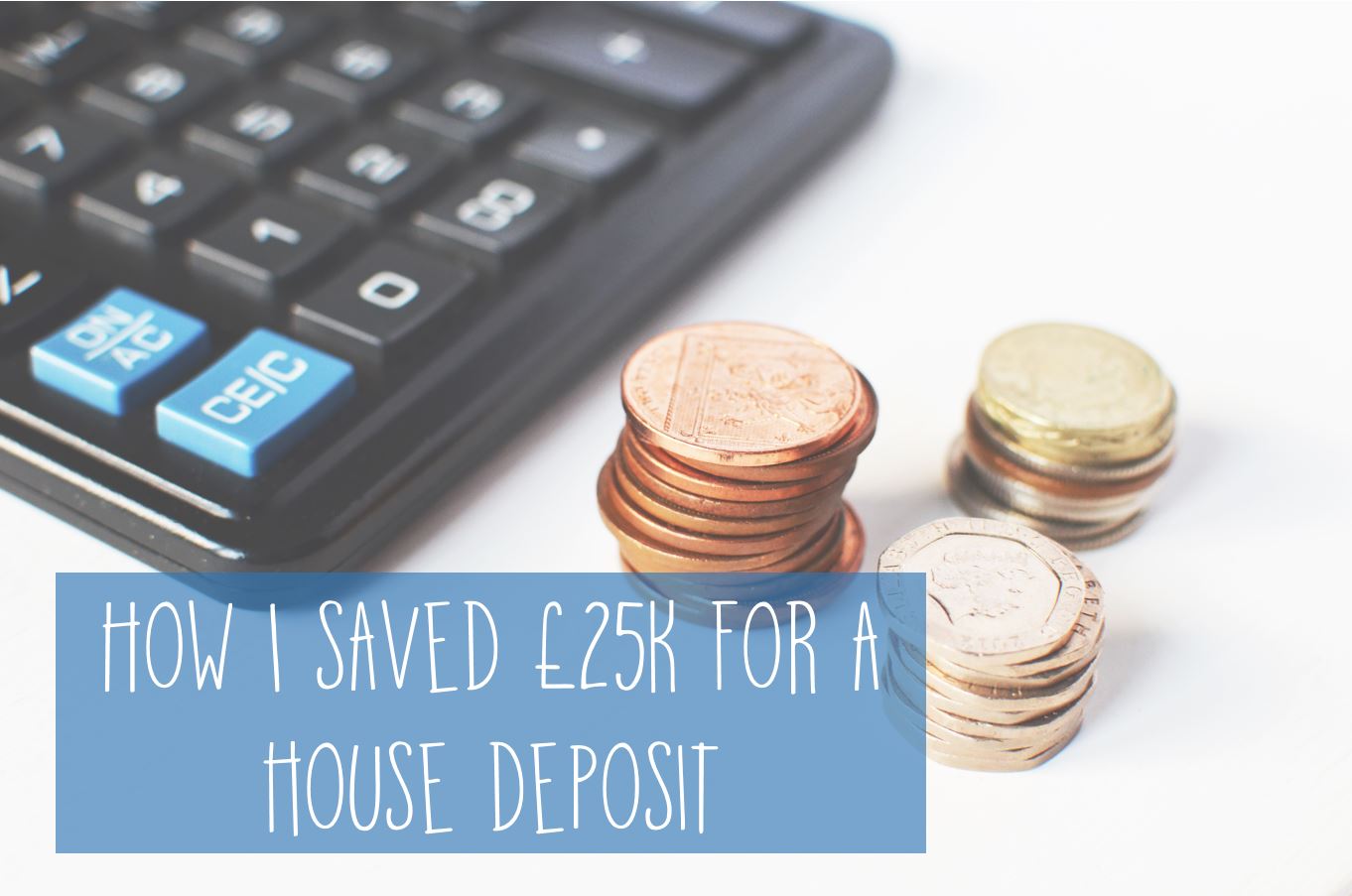How to buy a house: Mortgage and Deposit
This is the second post in the “How to buy a house” series, with the first post about Finding the right property.
Today I go into what I hope is a helpful level of detail for anyone looking to buy a house that requires a mortgage. Before we start, I am certainly not a mortgage advisor, and the advice I give here is purely my un-financially-educated opinion gained from the experience of buying a very difficult house, and the problems we faced when sorting our mortgage and deposit.
Therefore, if you’re at the stage where you’re either trying to work out what you can afford, or you’ve found the house of your dreams, working out exactly how you’re going to pay for it is probably the best start.
Sort out your finances and save up a deposit
Before even considering buying a house, you will undoubtedly need a chunk of money in order to do so.
This will vary depending on price of property you’re looking at, your credit score (which is worth thinking about quite a while in advance), and the lender’s requirements, but most people usually put down 5-15% as a deposit. Usually, the bigger your deposit, the better rates your mortgage will be as the loan to value ratio decreases, so if you can manage to save 15% + of your future house value then that’s fantastic as you’ll end up paying less back in interest.
We had been squirrelling away money for years before we bought our house, and a few months ago I wrote a post all about how I saved £25k for a house deposit. In short, your deposit acts as your up front lump sum, whereas the mortgage covers the rest of the price of the property, which you pay back, including interest, over time. E.g. If you were buying a £100k house, and put down £10k as a deposit, your mortgage would be for £90k.
One thing worth thinking about is that no matter how much your house and deposit add up to, you’re still going to need anywhere between £5-10,000 extra just to pay the fees incurred when moving house (solicitors, mortgage advisor, surveys and stamp duty), so rather than working out how much deposit you can afford based on every penny in the bank, think about overall costs too.
Hire a Mortgage Advisor
Our Mortgage advisor (or brokers as they are sometimes known) are particularly helpful when you’re buying a house, and of all the people we paid during the process, Alan was by far the best of all of them, really fighting our corner and giving us the best advice. His fee would usually have been £295, but we had it reduced to £195 as we were a repeat customer, and he will have more than paid for himself within a matter of months (on a side note, the fee is usually kept quite low as lenders will actually pay brokers commission when their customers choose mortgages with them).
A mortgage broker will help you get your necessary finances in order, scan the whole mortgage marketplace to get you the most favourable deals – which often aren’t available to the public (though some brokers are limited to only a small range of lenders – watch out for this!), and save you a huge amount of time having to go and get quotes from every single mortgage lender (i.e. banks mostly). They are also especially helpful if you have a trickier situation to deal with, like if you’re self-employed or have a bad credit rating.
100% this would be my biggest piece of advice for anyone looking to move, and from our experience it was the easiest way to get a mortgage at the lowest rate possible.
Get a mortgage in principle
When you’ve found a house you love and you’re looking to place an offer, to show you’re serious and put you ahead of other potential offerers, it’s worth getting a mortgage in principle (or agreement in principle as it’s sometimes known). This gives you a snapshot of what type of mortgage in principle you’d be able to get if you were to apply for one. Like a sort of promise or guideline.
They do have their limitations as they don’t guarantee you’ll have your mortgage application accepted, and they don’t look into your finances in the same depth as an application, but they do help show sellers that a potential buyer is actually in the market to buy their house. Equally, though one mortgage may look excellent when you get it in principle, it may change by the time you buy the house – luckily you’re not tied into anything by asking for one. Though be warned, if you applied for many MIPs back to back it could damage your credit score, so it’s worth only getting one if it’s required and when you’re serious about buying as they are usually only valid for 3 months.
Read up about the types of mortgages available
The types of mortgages available on the market are extensive, confusing and damn well overwhelming. Therefore, it’s too easy to just go for whatever seems simplest rather than starting extensive discussions (see how a mortgage broker can help!).
You have the option of repayment (where you pay back some of the money you owe, plus a little interest) vs interest-only (less common as they’re cheaper monthly repayments, but at the end of the term you’ll still have the whole original loan to pay off).
Then there’s the option of fixed rate, standard variable rate, and tracker mortgages:
Fixed Rate: The most common type of mortgage, where you have a set interest rate for a chosen number of years (and no matter what the Bank of England does you will pay the same amount back each month for that length of time). These are usually higher rates the longer they are fixed for, but it’s worth looking at your options available, especially if you’re stretching your budget but know you will have a stable income for a few years.
SVR: The lenders own basic interest rate set and determined by them and not linked to the Bank of England base rate.
Tracker: A rate that follows the Bank of England’s base rate and is usually a set % above it. For instance, if the BoE was at 0.5% and your mortgage is 2% above base rate, you’d pay 2.5%, if it increased to 1%, you’d be paying 3%. This mortgage will be favourable if the overall country’s base rates are currently low but can be very variable.
The other variables you’re going to have to look at are the length of your mortgage. Most apparently are between 20-25 years, but if you’re young you can get a maximum of 35 years, which we went for as it overall lowered our monthly repayments, and didn’t hugely increase our interest rates. You have the option to pay back chunks of it over time, but this initial length is based on how long you’d be paying back your mortgage if you paid the same amount every month until it was paid for.
Apply for your Mortgage
Once you’ve reviewed all the mortgages available to you and chosen the one you think works best for your financial situation, you then have to apply for it with that lender.
If you have a broker, they will do the actual application for you, but you can also do this directly yourself otherwise.
There will be forms to fill in with all your personal information, pay slips, bank and finance details (including often quite an extensive copy of all of your bank statements showing all transactions over the last 3-6 months to assess your total outgoings) and then the application will be submitted to your chosen lender. Be warned that you will need official bank statements which include your full address on them – we realised late on that the PDFs you get from online banking don’t always have this and mortgage lenders won’t accept them, so it’s worth either changing to paper copies for a few months or checking prior and getting the bank to post or fax you copies that include your name and full address.
If you’re also being gifted some money to help you buy the house, you’ll be required to prove where it has come from, and often you’ll need letters from the gifters stating that it is a gift rather than a loan (even if they’re family members!)
The mortgage lenders will do some faffing about checking over all the details, making sure you’re secure financially, doing credit checks and a mortgage survey of the house you’re buying to check it’s worth the amount you’re buying it for (as after all, in most cases, they will own the majority of it for a good few years and they want to check it’s worth it!). This mortgage application process can take anywhere from a week to two months, depending on how complex your application is. We had hold ups based on bonus’ (some lenders taken them into account, some don’t), back pay and overtime (also sometimes taken, other times not, and if it is, is usually taken as an average over the previous 3 months)- so it frustratingly it took longer than we’d hoped.
However, once you’ve got your mortgage offer, you’re likely to be at the point where you’re ready to exchange, and you usually have six months where the offer stands. Therefore, although it can seem like a never ending battle, it’s a necessary evil to slog through in order to sign on the dotted line and get the keys to your new home!
Coming up next in the “How to buy a house” series…Making an offer and hiring a solicitor…





